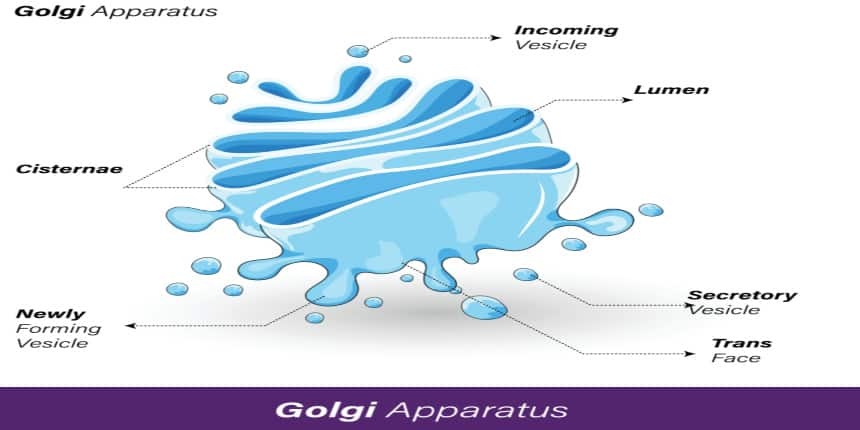NAG FULL FORM
What is the Full Form NAG?
The Full Form of NAG is N-acetyl glucosamine. NAG is an amino sugar that occurs as a component of the peptidoglycan layer in bacteria. It is a derivative of glucose. It is located between two NAM molecules in the oligopeptides of the peptidoglycan layer of the bacterial cell. NAG provides a foundation to the peptidoglycan layer thus providing power to the bacterial cell wall.
- What is the Full Form NAG?
- Other names of NAG:
- Functions of NAG:
- Medical uses:
- Mechanism of action
- Similarities between NAG and NAM
- Difference between NAG and NAM

Peptidoglycan or PG is unique to bacteria. It is the part that occurs in the bacterial cell wall. There is a layer of peptidoglycan in the bacterial cell wall. Based on the thickness of this layer, bacteria are categorised into two major groups that are significant in bacterial differentiation.
One is Grams-positive bacteria where there is a thick peptidoglycan layer and the other one is Grams-negative bacteria where a thin peptidoglycan layer is present. Peptidoglycan is a polymer consisting of sugars and amino acids. N-acetylglucosamine (NAG) and N-acetylmuramic acid (NAM) are two changing amino sugars that occur in the peptidoglycan layer of the bacterial cell wall.
Bacterial growth, division, colonisation, and biofilm formation rely heavily on the ability of cells to remodel their wall, which includes both the degradation and synthesis of PG. Staphylococci constitute a massive group of bacteria that adapt to humans and can cause infections in immunocompromised patients. The dramatic use of antibiotics in present times has given rise to antibiotic-resistant strains. For example, β-lactam-antibiotic (penicillin) resistant bacteria.
Alternating N-acetylglucosamine (NAG) and N-acetylmuramic acid (NAM) residues linked by β-(1,4)-glycosidic bonds and cross-connected with polypeptide chains assemble the structure of PG. Two types of enzymes that are muramidase and N-acetylglucosaminidase, cut equivalent glycosidic bonds alternatively in the NAG-NAM polymers.
N-Acetylglucosamine is an amide structure of the monosaccharide glucose. It is a secondary amide between glucosamine and acetic acid. It is important in many biological systems. It forms hyaluronan when polymerized with glucuronic acid,
Structurally NAG is similar to NAM. However, NAG does not have a pentapeptide molecule linked to it. N-acetyl glucosamine also comes from the outer shells of shellfish. Almost all glucosamine items contain glucosamine sulfate or glucosamine hydrochloride.
Although glucosamine sulfate and glucosamine hydrochloride are traded together in association products with N-acetyl glucosamine, no human studies have evaluated these combinations for treating diseases like osteoarthritis.
chitosan is also an ingredient in some glucosamine substances. Chitosan which constitutes the exoskeletons of arthropods such as insects and a significant part of the cell walls of most fungi is a formation of N-acetyl glucosamine that has been chemically modified.
Other names of NAG:
2-acetamido-2-deoxyglucose, Acetylglucosamine, Acétylglucosamine, Glucosamine, Glucosamine-6-phosphate, Glucosamine N-Acetyl, N-Acetyl Glucosamine, N-Acétyl Glucosamine, N-Acétyl-Glucosamine, N-Acétylglucosamine, N-Acetyl D-Glucosamine, N-Acétyl D-Glucosamine, NAG, N-A-G, Poly-NAG.
Functions of NAG:
1. To regulate the cellular shape
2. Takes part in cell flexibility due to its rigid mesh-like structure
3. It helps transport molecules through its porins and anchored proteins.
4. Anchored proteins like teichoic acid are important in the regulation, structure, and function of the cells
5. It maintains the cellular pressure, without it the cell would take too much water and burst.
Medical uses:
It is researched for the treatment of autoimmune diseases and some success has been achieved in recent tests.
As per research, N-acetyl glucosamine may safeguard the lining of the stomach and intestines.
N-acetyl glucosamine might interfere with blood sugar control during and after surgery. Stop taking N-acetyl glucosamine at least 2 weeks before a scheduled surgery.
NAG might affect blood sugar levels.
N-acetyl glucosamine is used frequently for osteoarthritis and inflammatory bowel disease.
NAG is used in diseases like ulcerative colitis and Crohn's disease.
Used as an inhibitor of elastase freed from human polymorphonuclear leukocytes
Mechanism of action
Biochemically, glucosamine takes part in glycoprotein metabolism. Glycoproteins are referred to as proteoglycans that make the ground substance in the extracellular matrix of connective tissue. Proteoglycans have high-molecular weight and possess many different groups of heteropolysaccharide side chains linked to a backbone of the polypeptide chain.
95% of the proteoglycan structure is made up of these polysaccharides. Originally, proteoglycans looks more like polysaccharides than proteins. The polysaccharide groups in proteoglycans are called glycosaminoglycans (GAGs).
N-acetylglucosamine is opted to be less effective in in-vitro studies. Glucosamine also has antioxidant activity. It is beneficial in animal models of experimental arthritis.
Similarities between NAG and NAM
They are both amino sugars.
They occur in the bacterial cell wall.
NAG and NAM are constituents of a peptidoglycan monomer.
They have a ring structure.
Both provide toughness to the bacterial cell wall.
Difference between NAG and NAM
The key difference between NAG and NAM are given below:
The NAG is an amide that constitutes glucosamine and acetic acid while NAM is an ether of lactic acid and N-acetylglucosamine.
NAM has a peptide chain linked to it while NAG does not possess a peptide chain linked to it. NAG is present between two NAM molecules and makes the structure of the peptidoglycan layer.
NAG does not possess a pentapeptide linked to it while the NAM possesses a pentapeptide attached to it.
Frequently Asked Questions (FAQs)
Bacterial cell wall is structured by peptidoglycan that forms from sugar derivatives - NAG and NAM.
The cell wall composes of peptidoglycan that is formed of repeating units of NAG and NAM. The peptidoglycan chains are cross-connected to each other via peptide bridges and make up a network called giant molecules around the bacterial cell.
The main difference between NAG and NAM is that NAG does not possess a pentapeptide linked to it while NAM possesses a pentapeptide linked to it.
Yes, a peptidoglycan monomer is composed of two connected amino sugars, NAG and NAM.
NAG is present in Gram-Positive Bacteria.